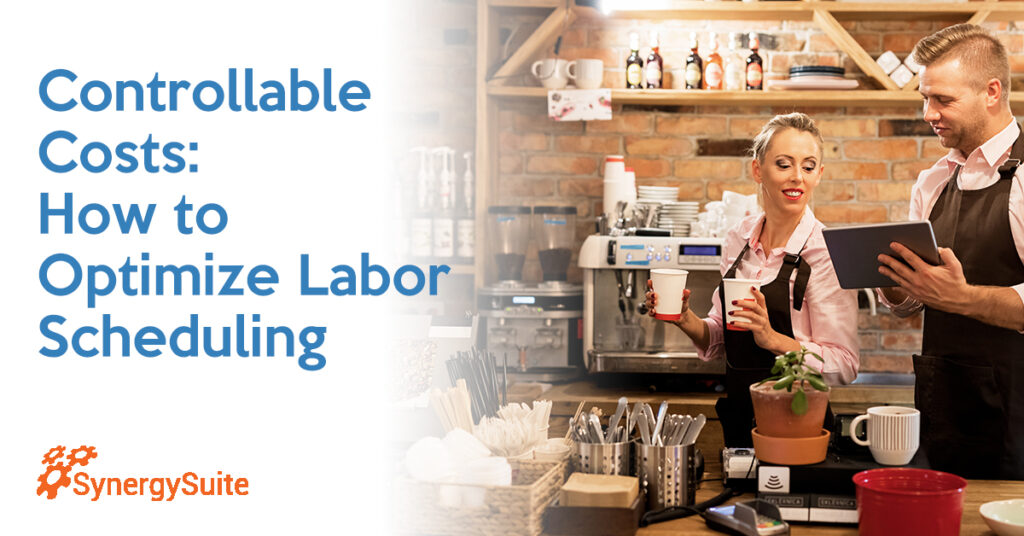In the restaurant industry, there are costs you can control and others you can’t. For instance, certain operational costs like rent and insurance are non-controllable, while labor costs and inventory expenses are more controllable. The key to scaling is determining which costs you need to keep constant in order to operate and which ones you can control and optimize in order to stay within a budget and grow your restaurant.
What are the non-controllable costs for a restaurant?
Many costs to your restaurant are simply outside of your control. Here’s a list of some non-controllable costs (or non-controllable expenses).
- Minimum wage increases
- Delivery fees
- Rent
What are the controllable costs for a restaurant?
While some costs are uncontrollable, you can control quite a few elements. Here is a list of controllable costs (or controllable expenses).
- Fines and late fees
- Electricity bills (shop around or aim to reduce consumption)
- Smart appliances and technology (save money with smarter appliances)
- The cost of labor (ensure nobody is clocking in too early, optimize processes)
Controlling costs by optimizing labor scheduling
When it comes to controllable costs, training and retaining employees is a big one. The less time and money you can spend on training new employees, the more money you can free up to pour into other parts of your business. Perfecting employee training, scheduling, and retention is a critical part of restaurant management—one that can save owners money while ensuring the long-term viability of their business.
Yet despite the importance of optimizing restaurant labor scheduling, many businesses still rely on paper schedules and haphazard communication between employees and managers to navigate shift switches and new-hire training. Fortunately, new software programs provide easy and cost-effective ways to make scheduling simple, accurate, and financially responsible. Here are our tips for getting started…
3 Tips for Reducing Controllable Expenses by Optimizing Labor Scheduling
- Invest in the right analysis and management tools
- Use software to manage employee requests and track availability
- Sync restaurant scheduling and payroll functions
1. Invest in the right analysis and management tools
First, invest in tools that make managers great: A good management staff is the backbone of every restaurant. Managers are often responsible for everything from scheduling and training staff to overseeing inventory, organizing site maintenance, and sending out payroll. That’s an enormous responsibility, so if you’ve found a great manager, make sure you’re providing them the tools they need to succeed.
For example, improve restaurant labor scheduling with time and attendance software designed to save managers time and operators money. Industry research suggests most managers spend up to 20 hours a week creating and updating employee schedules, unnecessarily costing owners thousands of dollars a year.
Restaurant scheduling software can help reduce labor costs by using employee data to automatically create customizable schedules based on location, forecasted sales, past sales patterns, and employee preferences. More importantly, an automated scheduling program also provides managers with hourly sales versus labor reports, making it easy to create the perfect schedule without needing to sift through old schedules to try and remember which shifts seem the busiest and which employees are available to work.
2. Use software to manage employee requests and track availability
Secondly, make it easy for employees and management to communicate by utilizing software to manage employee requests and track availability. Staff can simply log-in to a management program to request time off, swap shifts with coworkers, and receive approval from managers, regardless of time or location.
Imagine: no more waiting to hear back from a mass-text sent out to servers the morning before a shift is about to start, or arriving on-site to a sticky note left on the schedule indicating that today’s shift is short-staffed. And when an emergency does arrive, managers have access to all employee availability information, so finding last-minute replacements is quick and easy.
3. Sync restaurant scheduling and payroll functions
Lastly, syncing the restaurant scheduling and payroll functions guarantees that employees are on-time, working their assigned shifts, and not being paid for late-starts. Time and attendance software not only prevents payroll discrepancies, it also sends out important alerts when an employee maxes out their regular hours and qualifies for overtime pay, or when an employee is due for state-mandated trainings or food-safety classes. As a result, staff are always paid accurately and on-time while not being scheduled for unnecessary or non-compliant shifts.
Control costs, tighten your budget, and improve your restaurant
Managing and/or owning a restaurant will always require the ability to manage multiple moving parts— from inventory and purchasing to scheduling and training multiple employees. Make that work easier and control your labor costs with software designed to help optimize employee training, attendance, and shift management.





